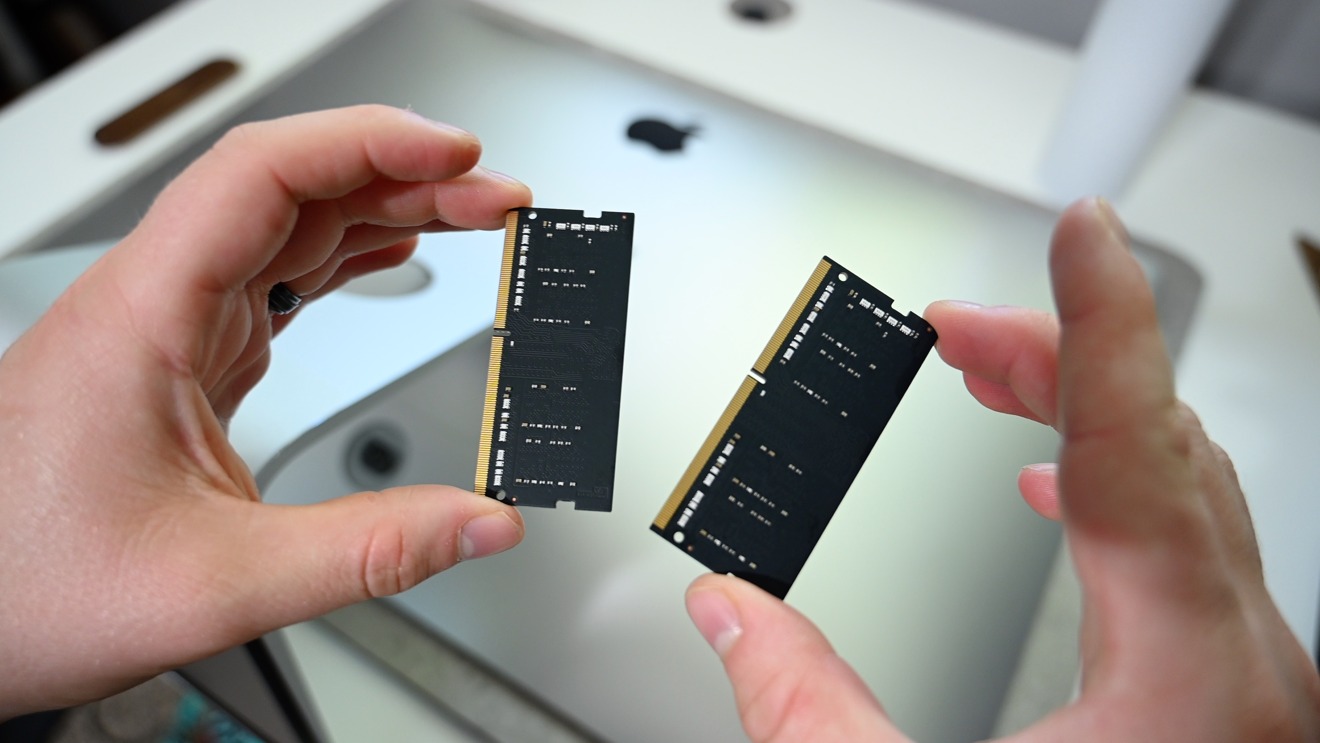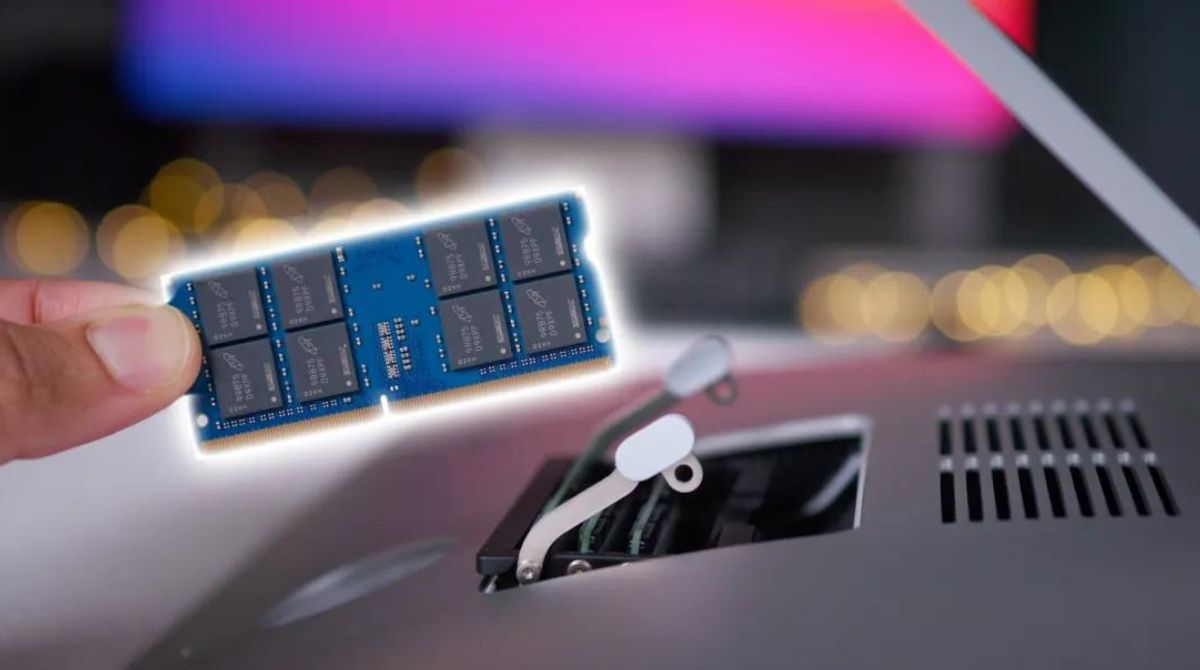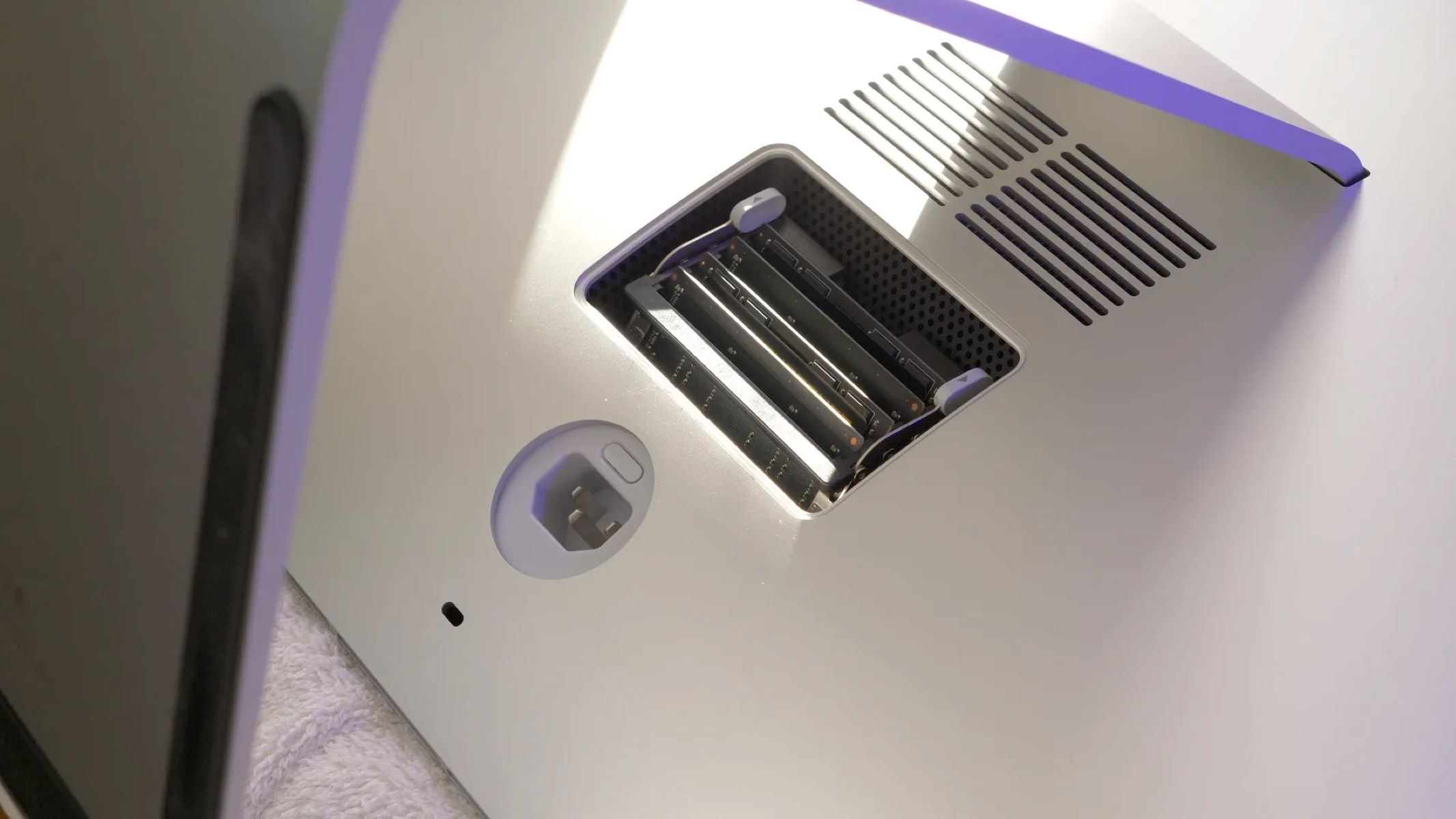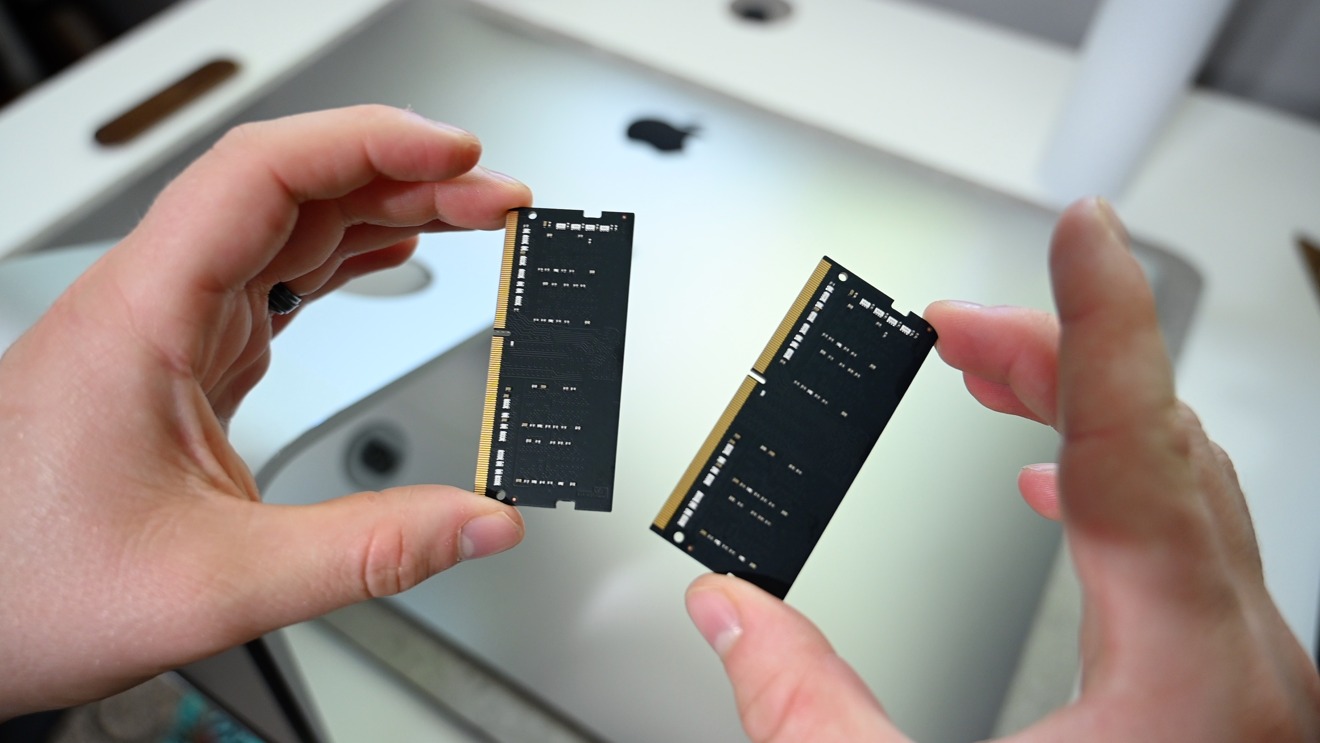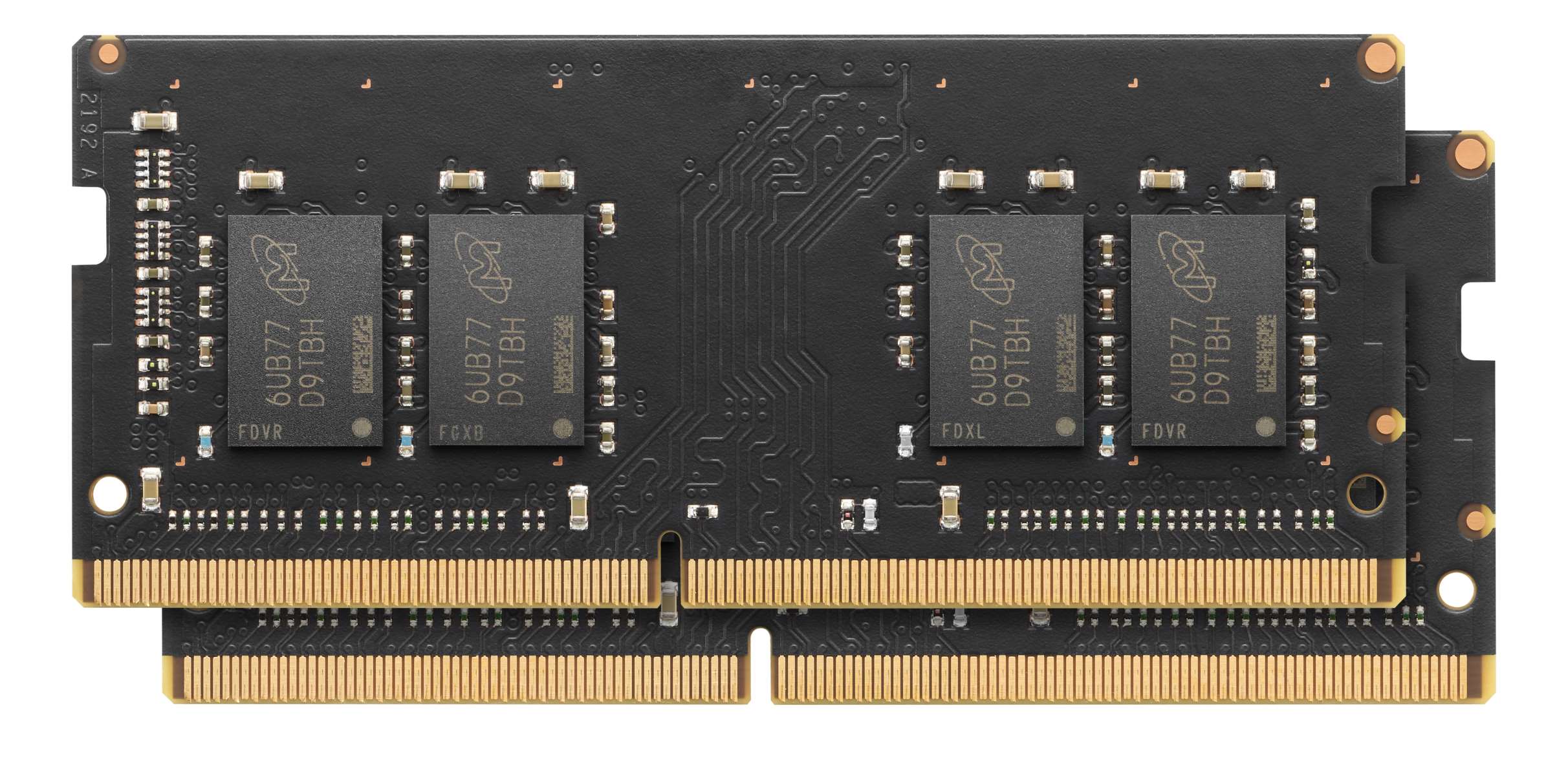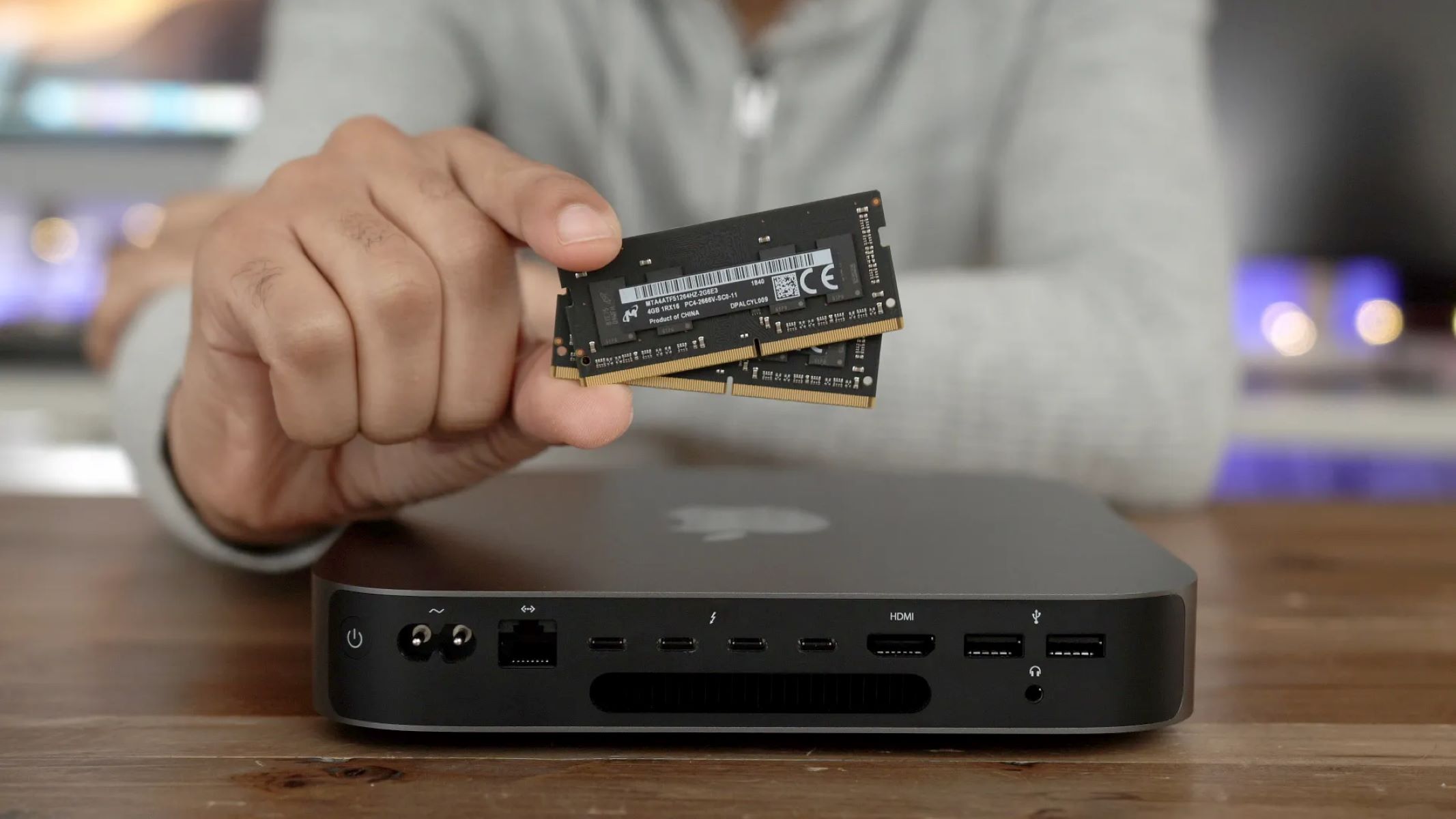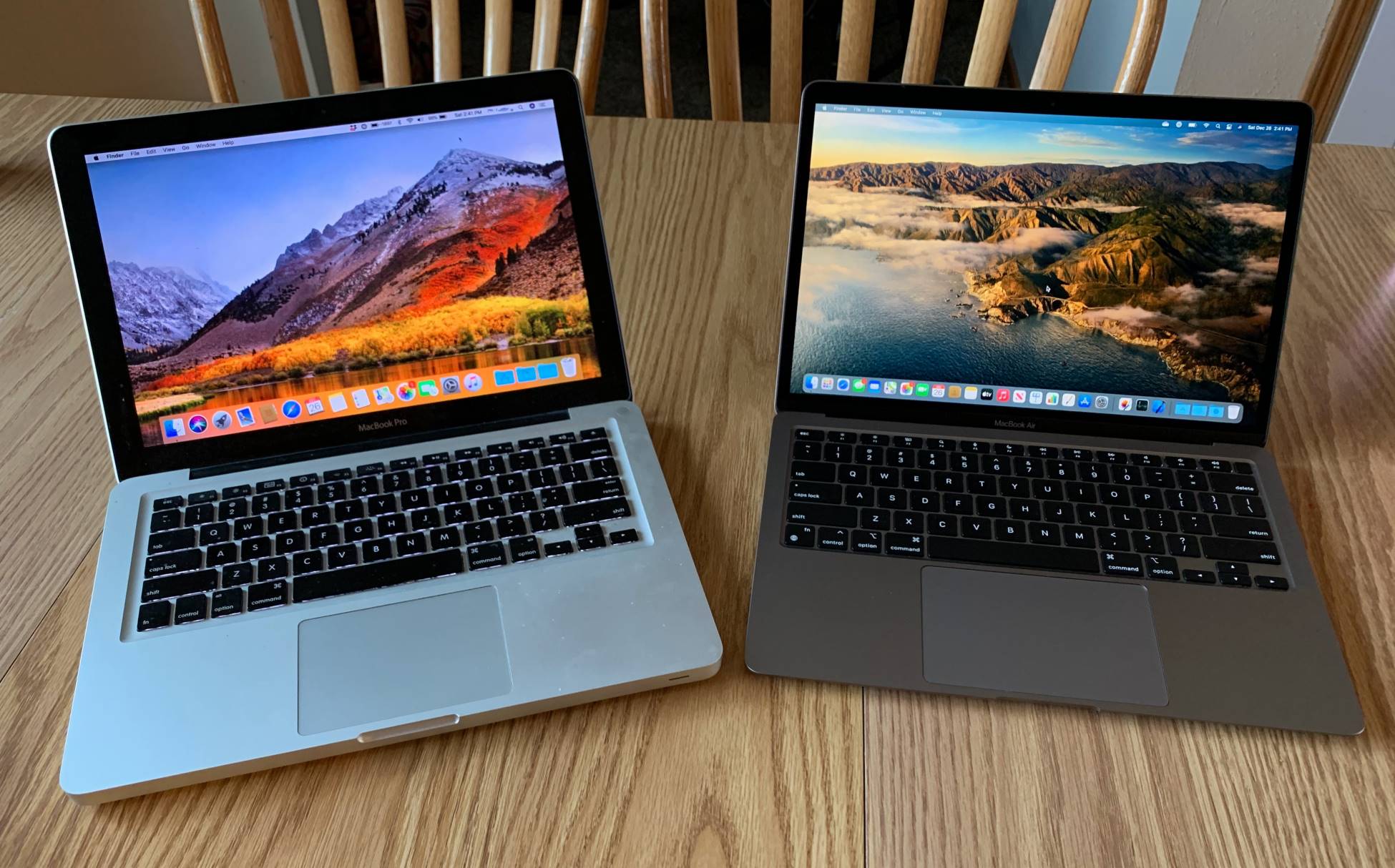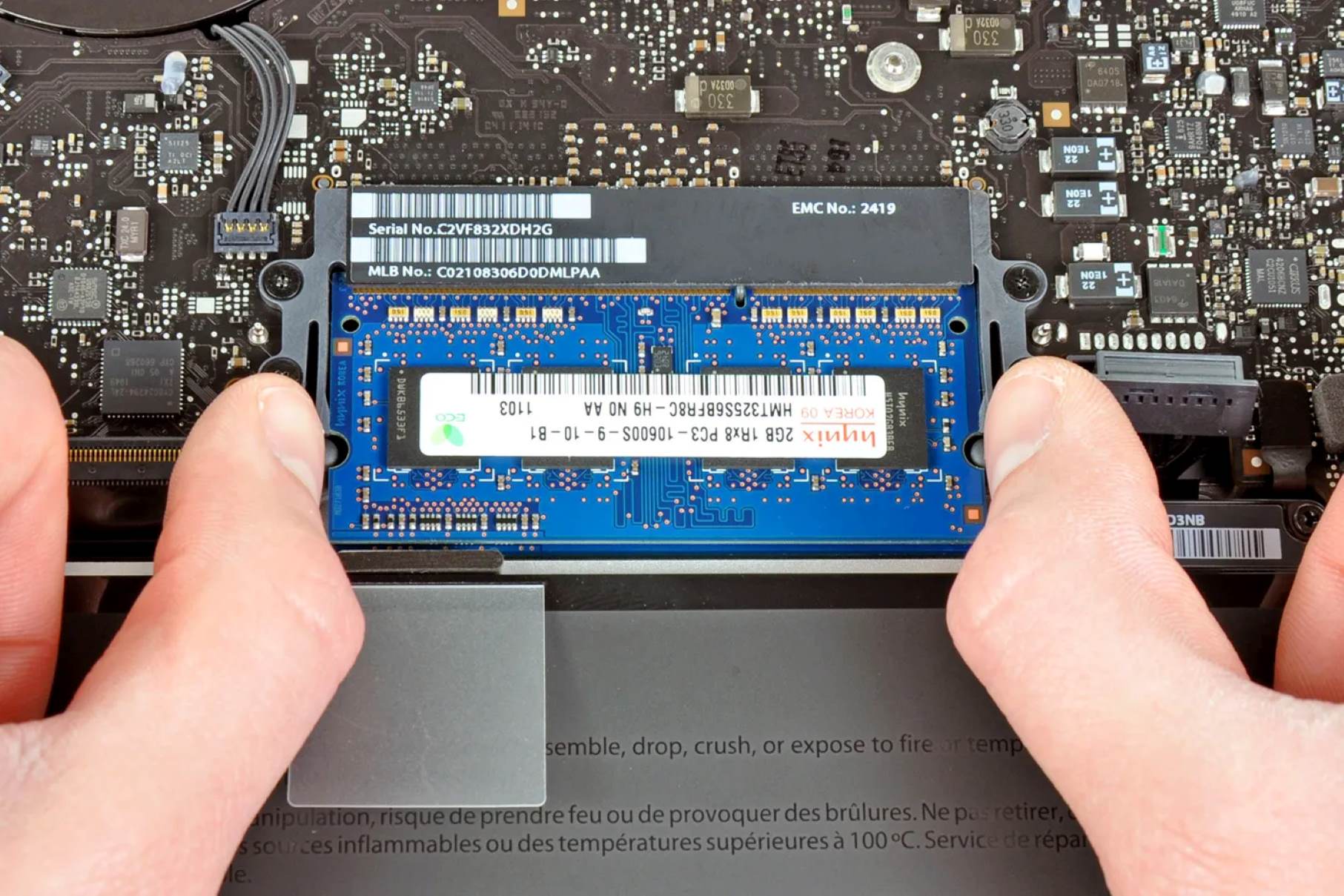Introduction
Welcome to the world of iMacs, where sleek design meets powerful performance. If you own an iMac or are planning to get one, understanding the type of RAM your iMac uses is essential. RAM, or Random Access Memory, is a crucial component that affects the speed and efficiency of your computer. By having the right RAM for your iMac, you can ensure smooth multitasking, faster application loading times, and an overall snappy computing experience.
In this article, we will dive into the world of iMacs and explore what kind of RAM they use. We will discuss how to determine the model of your iMac, the different types of RAM used by iMacs, and the RAM capacity and upgrading options available. Additionally, we will provide tips on choosing the right RAM for your iMac and guide you through the installation process.
Whether you’re a tech enthusiast looking to expand your iMac knowledge or a new iMac owner seeking guidance, this article aims to give you the insights you need to navigate the world of iMac RAM effectively.
How to Determine the Model of Your iMac
Before diving into the details of iMac RAM, it’s important to determine the model of your iMac. Knowing the model will help you identify the specific RAM requirements for your computer.
Here are two ways you can determine the model of your iMac:
- System Information: The easiest way to find out the model of your iMac is by using the built-in System Information tool. To access this, click on the Apple menu in the top-left corner of your screen and select “About This Mac.” A window will open, displaying the basic information about your iMac, including the model name and year.
- Model Identifier: Another way to determine the model of your iMac is by finding the Model Identifier. This is a unique code assigned to each iMac model. To find the Model Identifier, go to the Apple menu, select “About This Mac,” and then click on the “System Report” button. In the System Report window, under the “Hardware Overview” section, you’ll find the Model Identifier.
Once you have identified the model of your iMac, make a note of it. This information will come in handy when researching the RAM specifications for your specific iMac model.
Now that you know how to determine the model of your iMac, let’s move on to understanding the different types of RAM used by iMacs.
Types of RAM Used by iMacs
iMacs utilize different types of RAM depending on the model and year of your computer. The two primary types of RAM used by iMacs are DDR3 and DDR4. Let’s explore them further:
1. DDR3 RAM: DDR3 RAM (Double Data Rate 3) is the older generation of RAM and is used in older iMac models. It offers good performance and is still capable of handling many computing tasks. However, newer iMacs no longer use DDR3 RAM, so if you have an older iMac, it is important to check if it uses DDR3 RAM.
2. DDR4 RAM: DDR4 RAM (Double Data Rate 4) is the latest generation of RAM and provides improved performance and efficiency compared to DDR3. Most modern iMacs, especially those released after 2015, use DDR4 RAM. With higher transfer speeds and lower power consumption, DDR4 RAM enhances the overall performance of your iMac.
Each iMac model has specific RAM requirements, including speed and capacity. It’s important to refer to the documentation or specifications provided by Apple to determine the exact RAM type and speed your iMac supports.
Now that you are aware of the types of RAM used by iMacs, let’s explore the differences between DDR3 and DDR4 RAM and determine which one your iMac uses.
DDR3 vs DDR4 RAM: Which Does My iMac Use?
When it comes to choosing the right RAM for your iMac, understanding the difference between DDR3 and DDR4 RAM is crucial. Here are some key points to consider:
1. Speed and Performance: DDR4 RAM offers faster data transfer rates than DDR3 RAM. With increased bandwidth and improved efficiency, DDR4 RAM provides a noticeable performance boost, resulting in smoother multitasking and quicker data access. If your iMac is relatively new, it is likely to use DDR4 RAM, which offers better performance compared to DDR3.
2. Power Consumption: DDR4 RAM is more power-efficient than DDR3 RAM. It operates at lower voltage levels, resulting in reduced power consumption and heat generation. This energy efficiency not only benefits the environment but also contributes to the overall longevity and reliability of your iMac.
3. Compatibility: It’s worth noting that DDR3 and DDR4 RAM are not interchangeable due to differences in the physical design and electrical characteristics. This means you cannot use DDR4 RAM on an iMac that requires DDR3 RAM, or vice versa. Therefore, it is crucial to verify the specific RAM type compatibility for your iMac model.
To determine whether your iMac uses DDR3 or DDR4 RAM, you can refer to the official documentation from Apple or use the System Information tool on your iMac. Make sure to check the model specifications and look for the RAM type information.
Understanding the RAM type used by your iMac is essential, as it will guide you in selecting the appropriate RAM upgrades or replacements for your computer. Now that you know the difference between DDR3 and DDR4 RAM and have determined which one your iMac uses, let’s move on to explore the RAM capacity and upgrading options for iMacs.
RAM Capacity and Upgrading Options for iMacs
RAM capacity plays a crucial role in determining the overall performance and capability of your iMac. Upgrading the RAM can provide a significant boost to your computer’s speed and efficiency, allowing for smoother multitasking and improved performance with resource-intensive applications. Let’s explore the RAM capacity and upgrading options for iMacs:
1. Original RAM Configuration: The RAM capacity of iMacs varies depending on the model and year of your computer. Older iMacs typically had lower RAM capacities, ranging from 4GB to 16GB. However, newer iMac models can support significantly higher RAM capacities, ranging from 8GB to 128GB. Refer to the documentation or specifications provided by Apple to determine the original RAM configuration of your iMac.
2. Upgrading RAM: If your iMac is running low on RAM or you simply want to enhance its performance, upgrading the RAM is a viable option. Most iMacs allow users to upgrade the RAM easily, although the process may vary slightly depending on the model. It’s important to note that not all iMacs have user-upgradeable RAM. Some models have RAM integrated into the logic board, making it non-upgradeable. Therefore, it’s essential to check if your iMac has upgradeable RAM before proceeding with any upgrades.
3. RAM Compatibility: When upgrading the RAM in your iMac, you need to ensure that the new RAM modules are compatible with your computer. This includes considering factors such as the specific RAM type (DDR3 or DDR4) and the maximum supported RAM capacity. It is recommended to purchase RAM modules from reputable manufacturers that provide compatibility guarantees for your iMac model.
4. Professional Installation: While upgrading the RAM in some iMac models can be a straightforward process, it may require professional assistance for others. If you’re uncertain about the process or feel uncomfortable handling hardware components, it’s advisable to seek assistance from an authorized service provider or an Apple Store to ensure a seamless and error-free RAM upgrade.
By upgrading the RAM in your iMac, you can unleash its full potential and elevate your computing experience. Now that we’ve discussed RAM capacity and upgrading options, let’s shift our focus to choosing the right RAM for your iMac.
Choosing the Right RAM for Your iMac
When it comes to choosing the right RAM for your iMac, there are a few key factors to consider. By selecting compatible and high-quality RAM, you can ensure optimal performance and reliability for your computer. Here are some tips to help you make the right choice:
1. Compatibility: Ensure that the RAM you choose is compatible with your specific iMac model. Consider the RAM type (DDR3 or DDR4) and the maximum supported capacity. Refer to the official documentation or specifications provided by Apple to determine the compatibility requirements for your iMac.
2. Quality and Reliability: It is crucial to select high-quality RAM modules from reputable manufacturers. Choose RAM that has undergone rigorous testing and offers a warranty. This ensures that you are investing in reliable and durable RAM that will perform optimally in your iMac.
3. Speed and Timings: RAM modules come in different speeds and timings. While higher speed RAM may offer better performance, it is important to ensure that it is compatible with your iMac’s specifications. It is recommended to match the speed and timings of the existing RAM modules in your iMac for optimal compatibility.
4. Capacity: Assess your needs and determine the amount of RAM you require. Consider your typical usage patterns, including the number of applications you run simultaneously and the intensity of tasks. While more RAM can enhance performance, it is important to strike a balance between capacity and budget.
5. Reviews and Recommendations: Research online for reviews and recommendations from trusted sources or fellow iMac users. Check forums, review websites, or seek advice from knowledgeable individuals who have experience with upgrading RAM in iMacs. This can provide valuable insights and help you make an informed decision.
By taking these factors into consideration, you can choose the right RAM for your iMac, ensuring compatibility, performance, and reliability. Once you have selected the appropriate RAM, it’s time to install it in your iMac.
How to Install RAM in Your iMac
Installing RAM in your iMac is a relatively straightforward process, but it does require careful handling to avoid any damage to the components. Follow these steps to install RAM in your iMac:
1. Prepare: Shut down your iMac and unplug it from the power source. Place a clean, soft cloth on a flat surface to protect the screen and prevent any scratches while working.
2. Access the RAM Slots: Depending on your iMac model, you will need to access the RAM slots either by removing a panel at the back of the iMac or through the display hinge. Refer to the documentation or seek assistance if you are unsure about the specific procedure for your iMac model.
3. Ground Yourself: Before handling the RAM modules, discharge any static electricity from your body by touching a metal object. This will help prevent any static discharge that may damage the sensitive electronic components.
4. Insert the RAM Modules: Hold the RAM module by its edges and align the notch on the module with the notch in the RAM slot. Gently push the module into the slot at a slight angle, and then press it down until the latches on either side click into place. Ensure that the RAM module is securely seated in the slot.
5. Repeat for Additional Modules: If you are installing multiple RAM modules, repeat the above step for each module, ensuring they are properly aligned and securely inserted.
6. Close Up and Power On: Once all the RAM modules are installed, carefully replace the access panel or the display hinge, ensuring it is secure. Plug in your iMac and power it on to see if the RAM has been recognized and is functioning correctly.
It is important to note that iMacs have specific RAM installation procedures for each model, and some models may require professional assistance for RAM upgrades. If you are unsure or uncomfortable with the installation process, it is recommended to seek help from an authorized service provider or an Apple Store.
Congratulations! You have successfully installed RAM in your iMac, and now you can enjoy the enhanced performance of your computer. However, in some cases, you may encounter issues with the RAM. Let’s explore some common RAM issues and how to troubleshoot them.
Troubleshooting Common RAM Issues on iMacs
RAM issues can occasionally arise, even after correctly installing new RAM modules in your iMac. If you encounter any problems with your iMac’s RAM, here are some common issues and troubleshooting steps:
1. RAM Not Recognized: If your iMac fails to recognize the newly installed RAM or shows an incorrect amount of RAM, try the following steps:
- Ensure that the RAM modules are properly seated in the slots.
- If you installed multiple RAM modules, try reseating them one by one to determine if any specific module is causing the issue.
- Check that the RAM is compatible with your iMac’s specifications in terms of type, speed, and capacity.
- If the issue persists, consult Apple support or a professional service provider for further assistance.
2. Kernel Panics or System Crashes: If your iMac experiences frequent kernel panics or system crashes after installing new RAM, try these troubleshooting steps:
- Remove the newly installed RAM modules and see if the issue resolves. This can help identify if a particular module is causing the problem.
- Check the compatibility of the RAM with your iMac’s specifications, including type, speed, and capacity.
- Update your iMac’s firmware and operating system to the latest version, as outdated software can sometimes cause compatibility issues with new RAM modules.
- Perform a hardware diagnostic test provided by Apple to identify any other underlying hardware issues.
3. System Performance Issues: If you notice a decrease in system performance or sluggishness after installing new RAM, consider the following troubleshooting steps:
- Verify that the RAM is properly seated and fully inserted in the slots.
- Check if the RAM modules are of high quality and from reputable manufacturers.
- Ensure that the RAM modules are compatible with your iMac’s specifications.
- Reset the System Management Controller (SMC) on your iMac, as this can sometimes resolve performance-related issues.
If troubleshooting the RAM issues on your iMac proves challenging, it is recommended to seek assistance from official support channels, authorized service providers, or an Apple Store to ensure proper resolution of the issue.
Now that we’ve explored common RAM issues and troubleshooting steps on iMacs, let’s summarize what we’ve discussed so far.
Conclusion
Understanding the type of RAM your iMac uses and its specifications is crucial for optimizing the performance of your computer. We’ve covered key aspects of iMac RAM, including determining the model of your iMac, the types of RAM used (DDR3 and DDR4), and the differences between them. Additionally, we explored the RAM capacity and upgrading options for iMacs, providing tips for choosing the right RAM and guiding you through the installation process.
By selecting compatible and high-quality RAM, you can enhance your iMac’s speed, multitasking capabilities, and overall performance. However, it’s important to ensure that the chosen RAM is compatible and meets your iMac’s specific requirements.
If you encounter any issues with your iMac’s RAM, such as unrecognized RAM or system crashes, we provided troubleshooting steps to help you address these common problems. Remember to seek professional assistance if needed, especially when it comes to complex RAM upgrades or unresolved issues.
Overall, understanding and optimizing your iMac’s RAM can significantly improve your computing experience. Whether you’re a casual user looking for smoother performance or a professional needing to handle resource-intensive tasks, upgrading and choosing the right RAM for your iMac can make all the difference.
We hope this comprehensive guide has provided you with the insights and knowledge necessary to navigate the world of iMac RAM effectively. Happy computing!







